Search
Cascade Manufacturing Company • Cascade, Iowa
On May 7-11, construction crews across the nation took part in OSHA’s National Safety Stand-Down, an annual opportunity for framers to discuss safety with their employees and emphasize the importance of fall prevention.
When times are good and business is continually flowing in as it is right now, it’s easy to just keep the foot on the gas pedal and deal with what’s right in front of me. However, I make better decisions when I have the ability to look at the bigger picture. If I am only comparing myself to my past performance or my pre-determined expectations, I’m missing a huge opportunity.
While marijuana remains illegal at the federal level, as of January 1, 2018, recreational marijuana is legal in nine states and medical marijuana is legal in 29 states. As more states legalize marijuana, for medical or recreational use, component manufacturers are confronted with potentially needing to adapt their drug policies. Since marijuana remains illegal on the federal level, there is no obligation to allow employees to use marijuana off the clock.
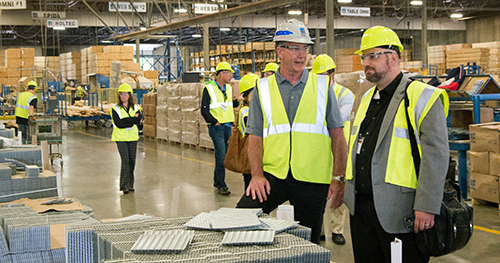
The largest hurdle to hosting a plant tour is having enough time. That's why we continue to create tools like those below to make it as easy as possible to host a tour.
The primary motivation to hosting a plant tour is to develop a mutually beneficial relationship with a supplier, potential customer, a city official, and many others in your community.
The case summary shown below, from the Centers for Disease Control (CDC), rationalizes some homeowner reactions to recent media coverage surrounding [toxic] mold. It is a legitimate fear. It can cause physical harm to sensitive people who are exposed to it. But, the type and amount of harm are uncertain.
The below article is an update of the article, "Who's Mold Is It?" published in the January/February 2003 edition of SBC Magazine.
Builder complaints regarding the growth of surface mold on the lumber contained within wood structural components, while not as frequently encountered as in the past, continue to pose a dilemma in some markets. The dilemma comes in the form of builders either demanding moldfree wood based products, or when mold appears on a component at the jobsite, they are demanding that suppliers provide an immediate remediation (e.g., removal) of the mold, regardless of the cause or the cost. And, where structures are improperly designed or constructed and mold growth appears years later, component manufacturers (CMs) have found themselves into construction defect litigation with various types of complaints being asserted.
Mold contamination is becoming a nationwide concern among homeowners and builders. Mold in homes and mold lawsuits have gained extensive media coverage from talk shows to feature articles in national publications. Even Erin Brockovich is making news in the mold litigation arena. Insurance companies are becoming increasingly concerned as well. They feel that they are unfairly bearing the brunt of the expense in remediating mold, thereby leading to revisions in homeowner and builder/contractor liability policies.
Mold can be found almost anywhere and can grow on virtually any substance, provided moisture is present. Several lumber associations are knowledgeable on this topic, including the American Forest & Paper Association's (AF&PA’s) American Wood Council (AWC), the Western Wood Products Association (WWPA), the Canadian Wood Council (CWC), and the Southern Pine Council (SPC). Surface molds, which can come from a variety of sources including airborne spores, feed off of the sugars and starches readily available in wood. Thus mold can and will occur naturally on lumber under certain conditions, normally due to the presence of moisture in or on the wood and warm temperatures. Therefore, component manufacturers and lumber dealers must realize that all lumber and wood components are susceptible to mold growth.
Interested in touring a Component Manufacturer? Fill out the form below to submit a request and we'll contact you to set up a tour.
 One of the most effective ways to develop a reliable customer base is to help builders and general contractors understand the benefits your products provide over the alternative. Bringing them into your plant gives them the opportunity to see your high quality products carefully built in a controlled environment, cementing in their mind why they should choose you over stick framing or another manufacturer.
One of the most effective ways to develop a reliable customer base is to help builders and general contractors understand the benefits your products provide over the alternative. Bringing them into your plant gives them the opportunity to see your high quality products carefully built in a controlled environment, cementing in their mind why they should choose you over stick framing or another manufacturer.
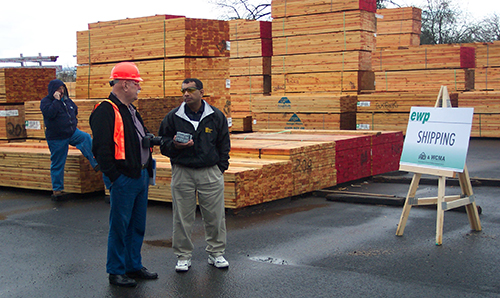 Relationships with building officials in your community can pay significant dividends if officials understand how trusses are designed, built, and installed, they can more easily provide feedback to the builder in the field on proper installation of your products. They are also tasked with determining the building code, and enforcing it, so developing a good relationship can help ensure the building code remains friendly to structural building components.
Relationships with building officials in your community can pay significant dividends if officials understand how trusses are designed, built, and installed, they can more easily provide feedback to the builder in the field on proper installation of your products. They are also tasked with determining the building code, and enforcing it, so developing a good relationship can help ensure the building code remains friendly to structural building components.
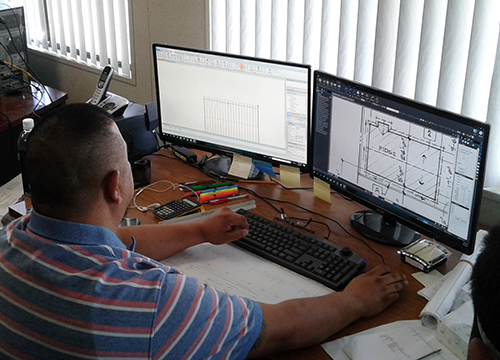 Architects, engineers and specifiers play an important role in deciding how buildings are built. The more that Component Manufacturers can educate these building professional on the structural and design advantages components provide to a structure opens many opportunities, particularly for market share growth.
Architects, engineers and specifiers play an important role in deciding how buildings are built. The more that Component Manufacturers can educate these building professional on the structural and design advantages components provide to a structure opens many opportunities, particularly for market share growth.
Return to Plant Tours.
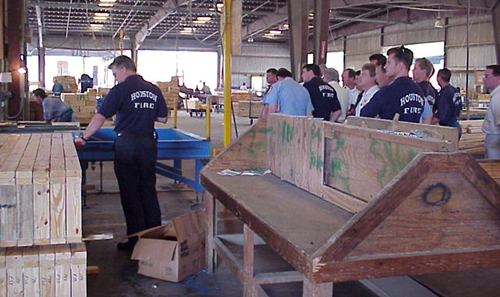 Benefits of building a relationship with Fire officials allows you to provide comprehensive information on the true fire performance of metal connected wood products. Since the invention of structural components there have been misperceptions and misinformation spread widely about what happens to components during a fire event. As a consequence, many times the fire service and component manufacturing industry have been at odds, but it doesn’t have to be so.
Benefits of building a relationship with Fire officials allows you to provide comprehensive information on the true fire performance of metal connected wood products. Since the invention of structural components there have been misperceptions and misinformation spread widely about what happens to components during a fire event. As a consequence, many times the fire service and component manufacturing industry have been at odds, but it doesn’t have to be so.
 Having a close relationship with framers is crucial given that they are responsible for installing your product. The importance can never be overstated, the more they understand how your products are designed and manufactured, and why it’s important to handle and brace your products properly, can go a long way towards ensuring continued market share growth.
Having a close relationship with framers is crucial given that they are responsible for installing your product. The importance can never be overstated, the more they understand how your products are designed and manufactured, and why it’s important to handle and brace your products properly, can go a long way towards ensuring continued market share growth.
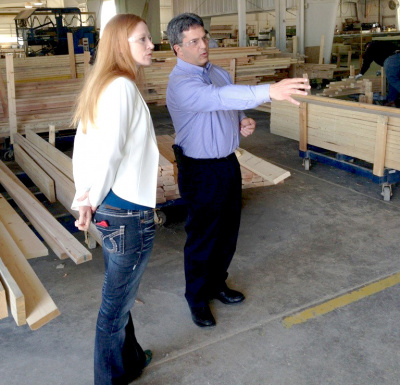 Elected officials are well connected individuals in your community and can prove to be an invaluable resource. They have the ability to directly influence laws that may impact the use of your product, or they can provide a communications channel for seeking recourse in the event your company is penalized or has difficulty securing permitting.
Elected officials are well connected individuals in your community and can prove to be an invaluable resource. They have the ability to directly influence laws that may impact the use of your product, or they can provide a communications channel for seeking recourse in the event your company is penalized or has difficulty securing permitting.
 Component manufacturers continue to struggle finding an abundant source of potential employees. It’s never too early to introduce aspiring minds to new career opportunities while fostering a relationship with a local instructors who may be your companies’ most valuable recruiter.
Component manufacturers continue to struggle finding an abundant source of potential employees. It’s never too early to introduce aspiring minds to new career opportunities while fostering a relationship with a local instructors who may be your companies’ most valuable recruiter.
Automatic sprinkler systems are an effective method of providing fire protection and are used in many applications in which metal plate connected wood trusses are used. This session will review the three types of automatic sprinkler systems specified in the building codes and what needs to be considered when designing trusses to be used with a sprinkler system.
Learn successful strategies for engaging and developing your design team, tracking output against errors, and providing employee's both training and personal leadership growth opportunities.
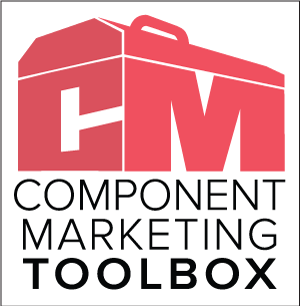 Learn how to use social media and your website to sell more product with the help of SBCA’s Component Marketing (CM) Toolbox. SBCA staff will review the resources developed from the Framing the American Dream comparison study of stick and component framing.
Learn how to use social media and your website to sell more product with the help of SBCA’s Component Marketing (CM) Toolbox. SBCA staff will review the resources developed from the Framing the American Dream comparison study of stick and component framing.
Explore the building code provisions that raise questions about the manufacture, installation and repair of metal plate connected wood trusses. Hear about the role of building officials, get expert insight into strategies for dealing with state and local code differences, and gain a better understanding of where to find answers the next time you have code-related questions.
When big projects come along or code changes are proposed, it’s good to have builders, architects, and building and fire officials who really understand what component manufacturing is all about. Learn how Bob and Keith became active SBCA participants and go-to presenters in their markets.
Is it worth it to implement and maintain a comprehensive safety program? (Hint: the answer is YES!) Find out what there is to gain from putting time and effort into a robust safety effort that goes beyond some PPE requirements. Learn about the safety program and tools SBCA has to offer, and share your experiences and challenges to direct the SBCA’s efforts throughout the year.
Why invest time in plant tours? Learn what CMs around the country get out of opening their doors to students, building inspectors, lawmakers and others. Plant tours might be your best bet when it comes to employee recruitment, addressing the code compliance issues that impact your bottom line, or simply teaching your elected representatives and your community what a component is. Whatever the reason for your next tour, you can expect to leave this session with practical advice on building relationships and collaborating effectively to expand business opportunities in your local market.
This webinar will discuss industry recommendations per BCSI’s Jobsite Package documents for storage, handling, installing, restraining and bracing of metal plate connected wood trusses. The session will provide an overview of B1, B2, B3, B4 and B11, which comprise a standard jobsite package as recommended by SBCA. This material includes important information for the various parties involved in the construction process including, the contractor, building designer, truss designer, truss manufacturer and code official.
Are you active in your local SBCA chapter? If not, YOU may be part of the problem -- and the ultimate solution! If your chapter is “fizzling out,” join this group roundtable discussion to share ideas about how to re-energize your local network and get your chapter moving forward again. Some of the best connections you can make through SBCA are in your own backyard. Hear why Dave decided rebuilding a local SBCA chapter was a critical piece of opening a new component business, and get some tips on ways to engage with peers in your own market.
SBCA’s IT Committee is in the initial stages of developing a uniform data standard that would enable information to be easily understood by any piece of equipment or software developed for the industry. Currently, the group is working through what information should be included in that standardized file. This webinar will be an overview of what this standard would mean for CMs and suppliers as well as provide time for input and questions from attendees.
Based on a panel discussion at BCMC 2017, this webinar will cover some best practices for managing a variety of design issues, from training designers and overseeing the design process, to tracking design work, errors and the associated costs. Come with questions about strategies to minimize and mitigate design mistakes, and leave with tips on how to manage mistake tracking data and recognize designers whose work is mistake free.




